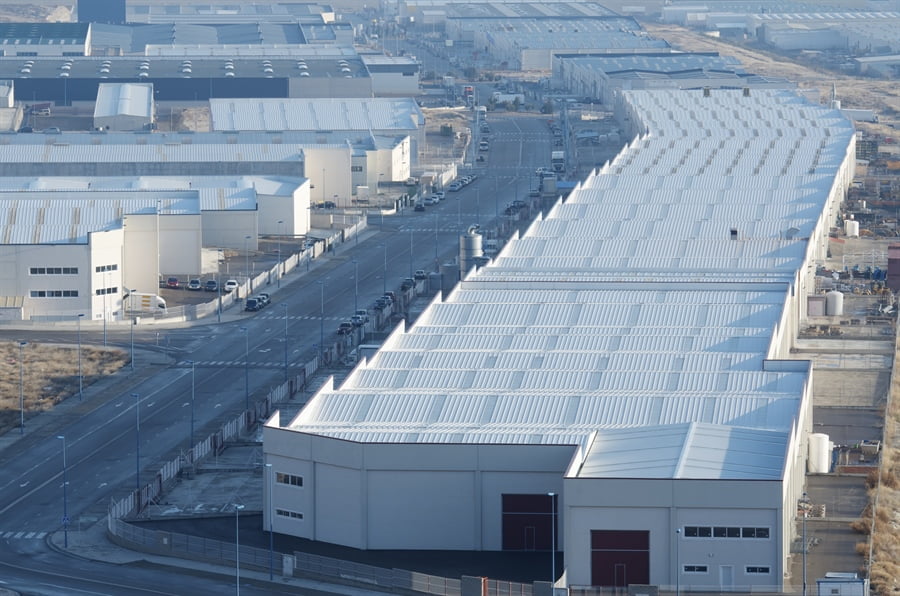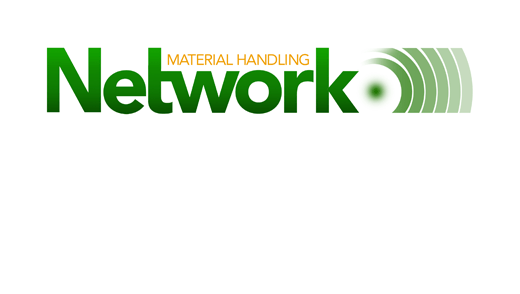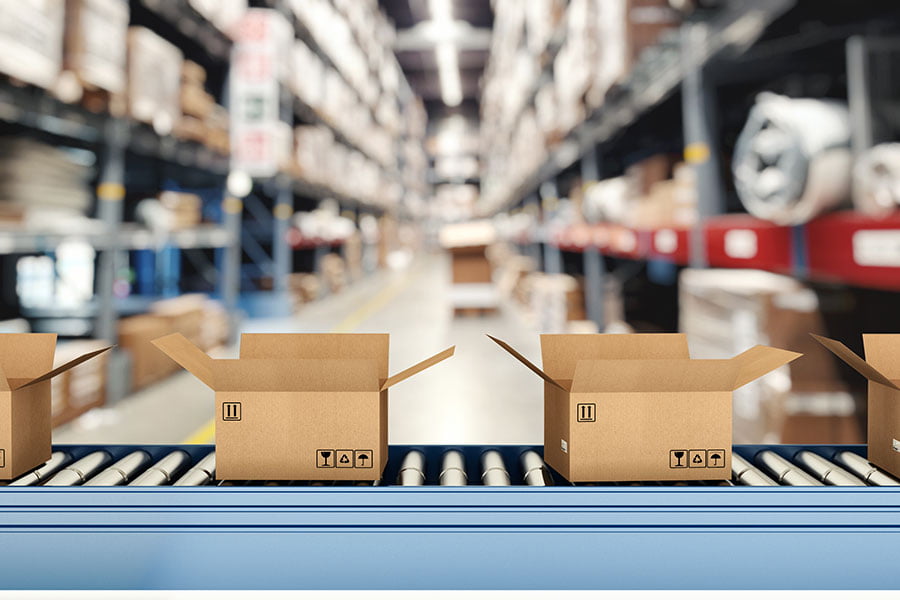Published April 29, 2014
By James A. Tompkins
CEO, Tompkins International
The rapid growth in online ordering and fulfillment is changing businesses and their supply chains. But can the pace of these changes affect the real estate industry in major ways?
You bet it can.
As rapid change takes place in online ordering and fulfillment for retail, consumer goods, distribution, and third-party logistics (3PLs), the needs for real estate space change too. The real estate industry is undergoing strong transformation as the availability for product changes, and companies must stay ahead of this rate of change or they will be overrun.
Companies need to rethink the location of their real estate for fulfillment and distribution, as well as the size of facilities and how their facilities will be used differently as a result of rapid change.
Supply chain strategies should be based on continuously evolving business strategies, and they both lead to critical implications for real estate. (Learn more about aligning strategies by downloading Tompkins Supply Chain Consortium’s report Aligning Supply Chains with Business Strategy.)
This article will focus on two of the most important real estate impacts of the pace of change occurring today:
- The impact on retail stores and malls.
- The impact on distribution and fulfillment facilities.
Facts Behind Pace of Change
Let’s explore how the pace of change is defined today. Sales growth in B2C has been primarily in online and discount sales since 2008 and going into the future.
Fastest Growing Channels in B2C Sales
| Fastest Growing Channels of B2C Sales | 2008-2013 Overall Growth | 2013-2018 Estimated Overall Growth |
| 1. Non-store retail (i.e., online retail) | 74.7% | 72.4% |
| 2. Discount store | 46.2% | 44.7% |
| 3. Online and discounted retail growth | 11.3% | 19.8% |
Source: Kantar Retail Analysis
According to Forrester Research, today’s B2B sales are more than twice the sales of B2C and are growing faster. More than ever, consumer products companies are selling their products online, and as retailers continue to move into private label, consumer packaged foods (CPG) companies are moving into retail.
Forrester Research also says that in 2012, nearly a quarter of all CPG companies sold products online. In 2013, 38% of all CPG companies sold products online, and it is estimated that half of all CPG companies will sell products online this year.
The growth of actual online sales from online purchases between 2012 and 2017 will only grow from 7.7% of total retail sales to 10.3% of total retail sales. Yet the percentage growth in this same time frame of web “influenced” offline sales will grow 54.3% (Forrester Research).
In fact, as people begin to really grasp the concept of omnichannel, the tracking of where an order is placed will be less important than how the sale was achieved. The sale will not be achieved by any channel, but by the overall price-experience-selection-convenience of the offering.
Grocery will be the fastest growing online category over the next five years in the U.S. Interestingly, studies show that it is one of the lowest categories in both percentage researched and percentage transacted.
The bottom line is that traditional mall and store real estate is not going to experience as much growth compared to where product orders are fulfilled, but distribution and fulfillment real estate will skyrocket.
Impacts on Retail Stores and Malls
As we predicted in 2011, the number of store closings to occur in 2014 will hit record numbers. The following stores have already made store closing announcements this year:
- Radio Shack (1,100 stores closing)
- Family Dollar (370)
- Staples (225)
- Jones Group (170)
- Sbarro (155)
- Others such as Abercrombie & Fitch, Barnes & Noble, Loehmann’s, JC Penney, Office Depot (Office Max), Aeropostale, Sears, Toys R Us, and many more.
What is worse than the 2014 store closings will be the bankruptcies in 2015. Businesses are not grasping the changes in the marketplace, and holiday 2014 will take its toll in 2015.
In addition to the number of stores shrinking, the size of many stores is also decreasing. On a macro scale in the U.S., there is 46 square feet of retail space for every person in the country. The UK has 9 square feet of retail space for every person. The amount of real estate dedicated to stores will not grow going forward.
Existing stores and malls will be converted for alternative uses such as health clubs, medical facilities, recreational centers, restaurants, and churches. “Gray” malls will continue to fall out of favor and “lifestyle” malls will prosper, although allocating fewer square feet to retail stores and more to “support” uses (e.g., restaurants, health clubs, entertainment and recreation, etc).
But it’s not all bad news. A bright spot will be the retail category of discount. This category includes a wide variety of players:
- Dollar stores: Dollar General, Dollar Tree, Family Dollar, 99 Cents Only
- Low every day prices: Walmart, Target, Costco, Sam’s Club
- Off-price: Kohl’s, TJ Maxx, Marshalls, Ross Stores
- Department stores: Nordstrom, Saks Fifth Avenue, Bloomingdales, Neiman Marcus
This category will add more stores than they will be closing. Contrary to other categories, they are highly desirable since they drive increased foot traffic.
Another positive for malls and stores will be the use of mall and store space to facilitate omnichannel. There will be space in the stores to support “click-and-collect,” store fulfillment, store returns, and using stores as dispatch centers to support final delivery or store clustering.
Impacts on Distribution and Fulfillment
The bottom line resulting from the pace of change on distribution and fulfillment is also very significant. The complexity of supply chain networks will grow substantially from what has been traditionally pursued. There have been a variety of factors that have contributed to this:
- Real transportation, operations, real estate, inventory, and capital costs must be utilized.
- Real incentive costs from government and energy sources need to be considered.
- Network modeling must be done with an understanding that demand for products is dependent upon service.
- Material handling systems and technology solutions must be designed to reflect best-in-class application and not what a sales person estimates.
- Different service requirements for different locations, types of customers, product categories, and channels must be considered.
- A wide range of distribution center and fulfillment center options must be considered.
- The combination of distribution centers and fulfillment centers must be considered.
- The network plan must be evaluated for the different cycles within the calendar year and for the evolution of customer requirements.
- The real cost of implementation must be included in the economic analysis.
Moreover, the evolution of omnichannel, omniorder and omnibrand must be designed into the supply chain. This is true for retailers, consumer goods companies, distribution, and logistics service providers. The integration of endless aisle product flow must be addressed as appropriate.
Real customer expectations for online delivery also bear considering for each scenario. A combination of the above four points will often contribute to the necessity to “get local” (GL).
To GL, organizations must address speed of delivery, location of inventory, location of customer delivery, delivery methodology, and utilization of 3PLs appropriately. The space required to process an equivalent dollar volume of product for an online order as compared to an in-store order can be three to four times the square footage. GL means companies will purchase more real estate in major cities where they can fulfill orders faster than ever before or be able to have a product available for pick-up at a nearby store.
These factors will often result in more distribution centers/fulfillment centers with different operating rules to achieve the best results. The total square footage of distribution center/fulfillment going forward will be considerably larger than in the past. Demand for larger distribution centers, fulfillment centers and distribution/fulfillment centers closer to major population densities will substantially increase.
The utilization of nontraditional warehouse space for distribution and fulfillment will also grow. Demand for available real estate for distribution/fulfillment will continue to be presented with less lead time; this will create significant opportunities for real estate owners and investors.
Moving Forward
A company’s continuously evolving supply chain strategy must be based on the continuously evolving business strategy of the firm and will have major implications on real estate. We see a bridge between business strategy and facilities-that is, defining the operations strategy and capabilities.
The only way to do this is to define the needed capabilities for the supply chain. Retail stores and malls will undergo substantial transformation and distribution/fulfillment centers are hot real estate markets right now.
These four things will happen as a result of today’s rapid changes in business:
- There will be more distribution centers/fulfillment centers with different operating rules.
- Companies will “get local” (or GL) by acquiring fulfillment space closer to stores and major customer markets for faster delivery.
- Malls will be converted into spaces for alternative uses.
- Discount stores will continue to grow.
These four changes are impacting the needs of businesses, supply chains, and real estate faster than ever before. Business, supply chain, and real estate managers need to recognize this fact and act now to prepare and respond to it.
James A. Tompkins is CEO of Tompkins International. He has written or contributed to more than 30 books and writes the Creating Supply Chain Excellence blog. Contact him at jtompkins@tompkinsinc.com.



